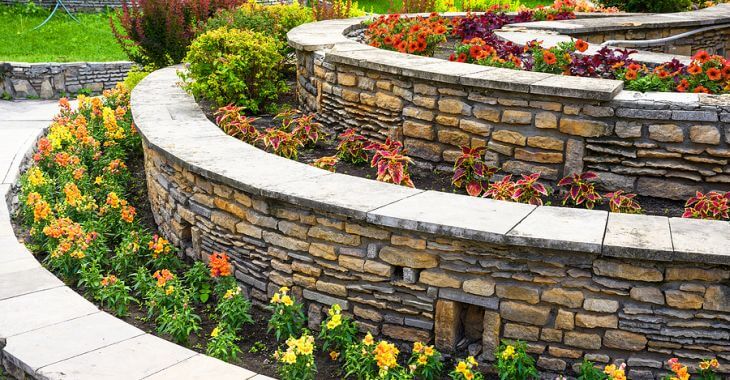Do I Need to Add a Retaining Wall to My Landscaping Project?
Retaining walls are used primarily to “shape” an area of a landscaping project that needs control, either for water drainage or to prevent soil erosion. Retaining walls are to, in essence, hold the soil between two different elevations where there may be two undesirable slopes. These structures help prevent the natural flow of gravity’s pull. In other words, they keep soil and water from naturally “running down hill.”
Because a retaining wall literally holds back soil or water from collapsing, they are often in need of additional support, to reduce the amount of pressure on the wall. Earth pressures can actually move a retaining wall if the pressure applied from gravity due to the ground’s slope is not properly considered. Additionally, proper soil water drainage behind the wall should be ensured. There are several kinds of retaining walls, depending on the size of your project. Some walls require setbacks, footings, or cantilevers. They can be formed from concrete, stone, masonry units, precast facing, stacked steel baskets with rocks, timber or walls formed from the soil and reinforced with rods.
For these reasons, it is important to contact your local landscaping professional when designing and installing the walls. They will recognize and understand the special challenges of your landscape and will be able to steer your toward the type of wall to meet your specific needs.
While the above information may seem overwhelming at first glance, rest assured that adding a retaining wall to your property can be not only decorative but useful, helping to transform and utilize your space to its best advantage.
